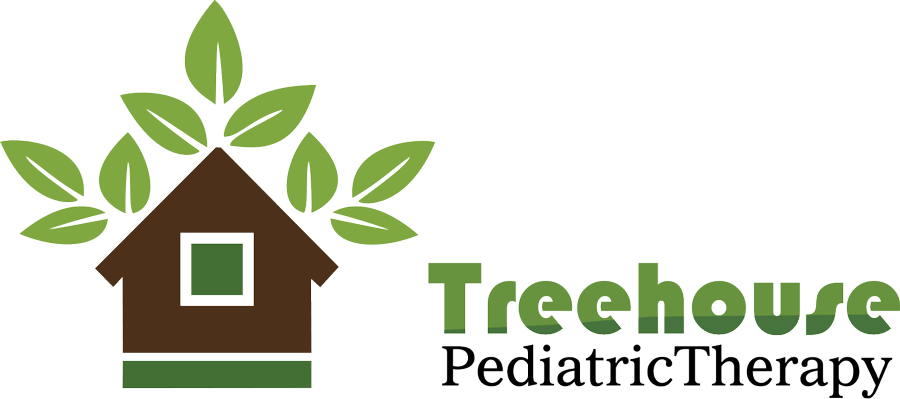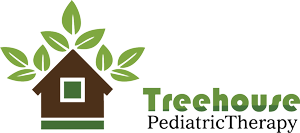6-12 months, child should be learning to:
Milestones & Red Flags
Click on a category to learn more.
Speech Milestones
- Show different emotions by smiling, laughing, crying
- Interact with toys
- Maintain eye contact
- Try to get your attention
- Babble with different sounds (baba, ga da, na)
- Copy or initiate actions and gestures (playing Pat a cake and peek a boo,
- waving, pointing)
- Respond to name and “No”
12-18 months, child should be learning to:
- Use 10-20 words
- Know some body parts
- Follow simple commands (bring me a __, clean up __)
- Point to pictures and objects when named
- Make a choice with a gesture or a word, given 2 options
18-24 months, child should be learning to:
- Say 50-100 words
- Use 2 words together (bye mommy, up mommy, more cookie)
- Say “no”
- Use social words such as “hi” and “bye” and participate in daily routines (bedtime, bath-time)
- Enjoy music and dancing and pretend play
- Point to or label body parts, clothing, and pictures in a book
- Soothe themselves without a pacifier or thumb
- Use their mouth muscles effectively (minimal drooling, maintaining lip closure)
2-3 years, child should be learning to:
- Speak so that 50-75% of speech can be understood
- Use 250 or more words
- Understand most things said to him or her
- Follow directions such as “go get your shoes and coat,” “put the blocks in the box”
- Answer and ask WH questions (“where daddy,” “what is this”)
- Take turns in conversation
- Talk when playing
3-4 years, child should be learning to:
- Speak so that 80% of speech can be understood
- Use initial, middle, and final consonants in words
- Talk about their experiences
- Express ideas and feelings
- Engage in long conversations
- Frequently ask questions and want detailed responses
- Use up to 6 words in a sentence
Feeding Milestones & Red Flags
Milestones
4-6 months (and up), child should be able to:
- Suck food off spoon (infant cereals, purees)
- Eat without coughing or choking
- Bite and release on teething biscuit
- Open mouth when spoon is presented
- With practice, push less food out of mouth with tongue
6-9 months, child should be able to:
- Eat ground or mashed table foods or junior foods
- Clear food off spoon with lips
- Tolerate variety of flavors
- Tolerate sippy cup
By 12 months, child should be able to:
- Tolerate/chew coarsely chopped table foods including easily chewed meats
- Swallow with with easy lip closure without pushing food out of their mouth
- Make transition off bottle
By 18 months, child should be able to:
- Eat coarsely chopped foods including meats and raw vegetables
- Drink occasionally from open cup with assistance
- Keep lips closed while chewing
By 24 months, child should be able to:
- Swallow easily from open cup with good lip closure
- Chew on both sides of mouth
- Lick his/her lips
*If you suspect feeding milestones are not being met, contact us to schedule a FREE 15 minute Speech Therapy screen.
Red Flags
- Coughing or choking while eating or drinking
- Poor nutritional intake
- Unable to transition from liquids to solids or from baby food to table foods
- Very limited food repertoire
- Significant drooling after age 2
Sensory Integration Dysfunction Red Flags
Red Flags (at any age)
- Avoids being touched (especially if unexpected)
- Dislikes getting hands messy or dirty
- Displays distress with hygiene tasks such as dressing, bathing, washing/cutting hair, clipping nails, etc.
- Picky eater, limited to certain brands, flavors, or textures
- Excessive drooling or mouthing nonfood objects
- Easily distracted/poor attention
- Activity level that is unusually high or low, always on the go
- Inability to unwind or calm self
- Clumsy or uncoordinated
- Walks on toes
- Startled by loud noises
Gross Motor Milestones in the Preschool Years
1-2 years, child should be learning to:
- Crawl up and down stairs: 14-16 months
- Walk up the stairs with one hand support: 15-16 months
- Walk down the stairs with one hand support: 18-20 months
- Jump up 2 inches and down from a height of 6 inches: 19-24 months
- Kick a ball independently: 19-24 months
- Walk up the stairs independently without hand support: 23-24 months
2-3 years, child should be learning to:
- Walk down the stairs independently: 24-25 months
- Have a reciprocal stepping pattern walking up the stairs: 31-36 months
- Jump over obstacles 2 inches high: 31-36 months
- Stand on one foot for 3 or more seconds without support: 31-36 months
3-6 years, child should be learning to:
- Run 45 feet in 6 seconds or less with a mature running form: 37-42 months
- Have a reciprocal stepping pattern walking down the stairs: 43-48 months
- Hop on one foot: 43-48 months
- Jump over obstacles 10 inches high: 46-60 months
- Stand on one foot for 10 or more seconds without support: 55-60 months
- Perform 3 consecutive sit ups without arm support: 55-60 months
- Perform 8 consecutive push ups: 61-72 months
*If you suspect gross motor delay, contact us to schedule a FREE 15 minute Physical Therapy screen.
Torticollis or Wry Neck
Torticollis is a condition where the neck musculature is contracted. Signs and symptoms include strong preference of head rotation/tilt to one side, misshapen head, or a noticeable small bump on the side of the neck.
Physical and/or occupational therapy work to help your child explore and interact with their environment as they develop and grow. Treatment for torticollis includes:
Physical Therapy
- Passive and active stretching to improve symmetry
- Soft tissue massage to tightened muscles
- Neck and core muscles strengthening
- Facilitation of gross motor milestones
- Modifications to improve tummy time
Occupational Therapy
- Exploring to the right and left side equally
- Bringing objects to midline
- Crossing midline
- Grasping patterns and developing fine motor skills
- Achieve and maintain eye contact
- Move eyes fluidly in vertical, horizontal, and diagonal directions
*If you suspect Torticollis, contact us to schedule a FREE 15 minute Physical Therapy screen.
Pediatric Incontinence/Pediatric Dysfunctional Elimination Syndrome
Has your child experienced difficulty in controlling their urinary and/or bowel functions? This is not an uncommon issue with children and it can be addressed. Treehouse Pediatric Therapy has physical therapists on staff that are trained in addressing Pediatric Dysfunctional Elimination.
Our program consists of a comprehensive plan of care to address bowel and bladder dysfunction. At Treehouse Pediatric Therapy, we devise individualized treatment plans that consist of:
- Biofeedback
- Timed void charts
- Pelvic floor exercises to increase strength and coordination
- Relaxation techniques
- Instruction on good toileting posture
- Adequate fiber/water intake
- Bowel charts
- Input on laxative management to facilitate optimal bowel/bladder health
The pelvic floor muscle plays an integral role in bowel/bladder health. Our therapists use a biofeedback approach to teach children how to strengthen and coordinate their pelvic floor muscles. While relatively new in pediatrics, the biofeedback approach has led to success in children who have difficulty contracting or relaxing their pelvic floor muscles with urination and defecation.
What to Expect in Therapy:
You will receive bowel/bladder protocols to follow at home along with a customized exercise program designed for your child. Our therapists will use a biofeedback machine to connect electrodes to their bottom (perineum) to monitor the action of the pelvic floor muscle. The therapist can help the child learn how to relax and strengthen the pelvic floor muscle so that normal voiding and defecation can occur.
The initial therapy session will be 60 minutes long and will include a written report for the parent and the physician. Ongoing appointments are 45-60 minutes long.
What Can You Do Now?
- Obtain a prescription from your pediatrician or specialist. The prescription must have a diagnosis with an order to evaluate and treat.
- Confirm with your insurance that this type of therapy is a covered service.
- Contact us to schedule an evaluation.
Fine Motor & Visual Motor Developmental Stages
<1 year, child should be learning to:
- Establish and maintain eye contact (2-6 months)
- Smile/recognize a mirror image (5-8 months)
- Track an object or person vertically, horizontally, and diagonally (5-8 months)
- Initiate body movements, such as clapping or peek-a-boo (9-12 months)
- Locate an object if pointed at (8-12 months)
1 year, child should be learning to:
- Grasp marker with fist and spontaneously scribble
- Use a pincer grasp (pointer finger and thumb)
- Bring hands to midline
- Point to objects or people
- Locate an item that fell or rolled away
- Recognize self in pictures
2 years, child should be learning to:
- Imitate a vertical, horizontal line and circle
- Assemble 3-4 piece puzzles
- Scan to locate a specific item
3-4 years, child should be learning to:
- Engage or complete activities of daily living (ADLs) such as feeding self, toileting, dressing, hand washing
- Copy a vertical, horizontal line and circle
- Cut a 6” piece of paper
- Locate a missing facial feature in a picture
4 years, child should be learning to:
- Copy a cross, square, and diagonal line
- Draw a person with head and 4-6 features
- Cut a circle
5 years, child should be learning to:
- Copy “X,” triangle
- Draw a person with head and 8+ features
- Cut a square, triangle
- Use a dominant hand (5-6 years)
- Write his/her name
- Use tripod grasp
- Sequence pictures to tell a story
*If you suspect fine motor/visual issues, contact us to schedule a FREE 15 minute Occupational Therapy screen.

